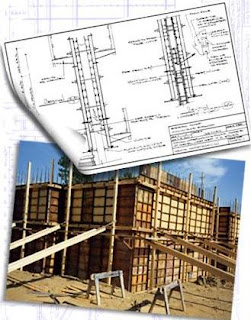
We Have All Seen The Bad
A hurried real estate agent needs some last minute photos for a new listing, a construction company with a limited advertising budget saves some money by taking their own pictures for their website, a desperate developer finds a friend of a friend to capture a new development in time to have brochures made for the grand opening, and the list goes on and on. Millions of pictures exist online that are the result of situations like these, but the reality is that a great first impression is the most powerful tool you can use to your advantage when presenting a property.
Professional Photography Sells Homes
I know people that believe that the accuracy in that statement is dubious, but there is undeniable evidence to prove its point. If you were to show two separate sets of photos from two comparable homes, the home that had professionally taken images compared to "hurried agent" pictures will not only illicit more showings, but will have a final sales price closer to the original asking price.
The most recent experience I had with this came from only a two hour session with very minimal lighting. The experience, equipment, and knowledge allowed me to get some quality shots of a moderately sized home. The morning after the listing was posted, there were five parties scheduled for a showing. Not only that, but a full price deal was accepted within the same week. In an economy where the main focus lies on joblessness and the depressed housing market, we managed to pull off what many others endlessly struggle with.
You Can Do It Yourself
I strongly advocate investing a few hundred dollars with a professional photographer as it will pay off in multiples when you go to sell or rent your house. I do realize, however, that sometimes people simply can not afford it. Luckily, this post will have 5 different steps you can take to increase the appeal of your architectural photographs. The main focus of the article is geared towards somebody renting or selling a house, but the information is relevant in any situation.
1. A Neat House Looks Less Lived In
The allure of a brand new home is extremely enticing. Regardless, people love buying lived in homes because they are less expensive and often have valuable upgrades already installed. The optimum situation would be a slightly older house that has been well taken care of, and when you are planning on renting or selling, that is what you want to portray to potential buyers.
Besides the obvious things like vacuuming and dusting, you should remove everything from view that transforms "your house" into "your home". This will help potential renters or buyers to see a clean slate in a place that they can make their own, rather than moving into your old house.
Some people might not consider certain things personal items, such as the TV (large ones are OK because they are considered furniture) and phone, but every little item counts, including cords sticking out from behind furniture if you are able to hide them.
2. Clean It Up, But Don't Clean It Out
It is best to take photos of a property when it is still furnished, assuming the furniture has at least some essence of quality. Furnished rooms give a sense of size and dimension, as well as presenting layout ideas for a space. Partially furnished spaces are the worst for photos. They show that the space was lived in, but was not utilized for some reason. This can lead someone into thinking that it would be wasted space for them as well.
3. Show Your Stability
Use a tripod. The average lighting in a home is quite dark, around 1/60 shutter speed at f/4-5.6 and ISO 400 for you camera buffs. Higher ISO settings lead to more noise, while slower shutter speeds, like 1/30, 1/20, and 1/15, lead to blurry photos. For the sharpest image you should use a tripod and a lower ISO (50 or 100 is best) along with your cameras timer function.
4. Avoid Converging Lines
Converging lines appear when a photo is taken when the camera is not level. Tilting the camera up or down causes vertical lines to converge, giving the appearance that the building or room is leaning back or forward. If you want to capture more of the floor or more of the ceiling then you should physically move the camera up or down while keeping it parallel with the floor.
5. Use The Light You Have
For rooms with blinds, the best thing to do is point them directly at the ceiling. By doing this, the light will bounce off the ceiling and scatter around the room for more even lighting. It will also keep direct light from coming in, causing windows to look blown out. In many bathrooms there are glass block windows. These make for great, soft light sources. If possible, avoid shooting directly towards open windows. However, it is sometimes nice to have it partially visible as a special feature.
More Resources And Bonus Techniques - A professional photographer can definitely give you an edge against the competition, but these tips will get you pointed in the right direction of you decide to do it yourself. David Hobby of the popular Strobist blog did a series on photographing to sell a house with some similar points and more lighting tips.
J.T. Shaver
Shaver Studios Design and Photography
Article Source: http://EzineArticles.com/?expert=J._T._Shaver
 Architectural CAD Drawing literally means architectural drawings on Computer in digital format. This finds application for residential, commercial projects, floor design, elevations, 2D and 3D presentation drawings. These drawings and documents cater to realtors, owners, consultants, engineers and contractors. CAD (Computer Aided Design) is primarily used for architectural and structural drafting services.
Architectural CAD Drawing literally means architectural drawings on Computer in digital format. This finds application for residential, commercial projects, floor design, elevations, 2D and 3D presentation drawings. These drawings and documents cater to realtors, owners, consultants, engineers and contractors. CAD (Computer Aided Design) is primarily used for architectural and structural drafting services.






















